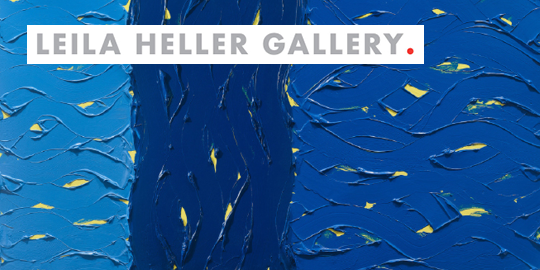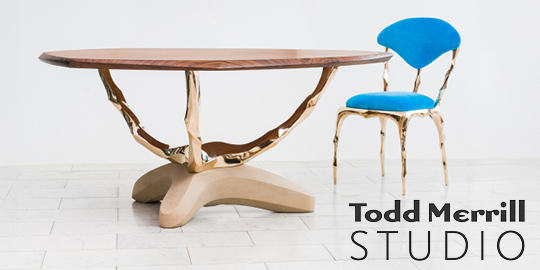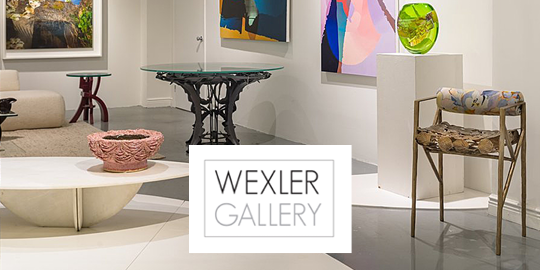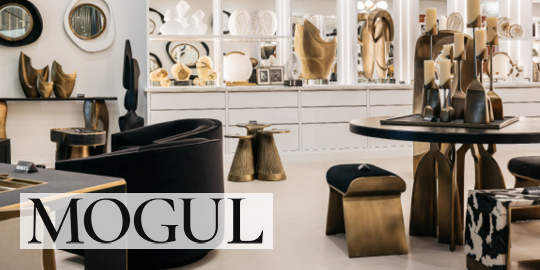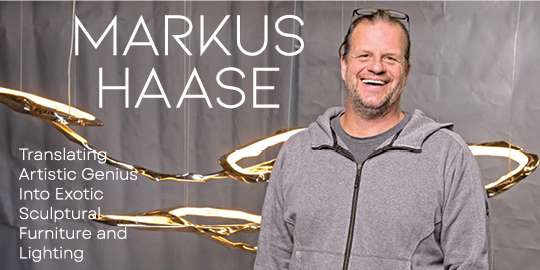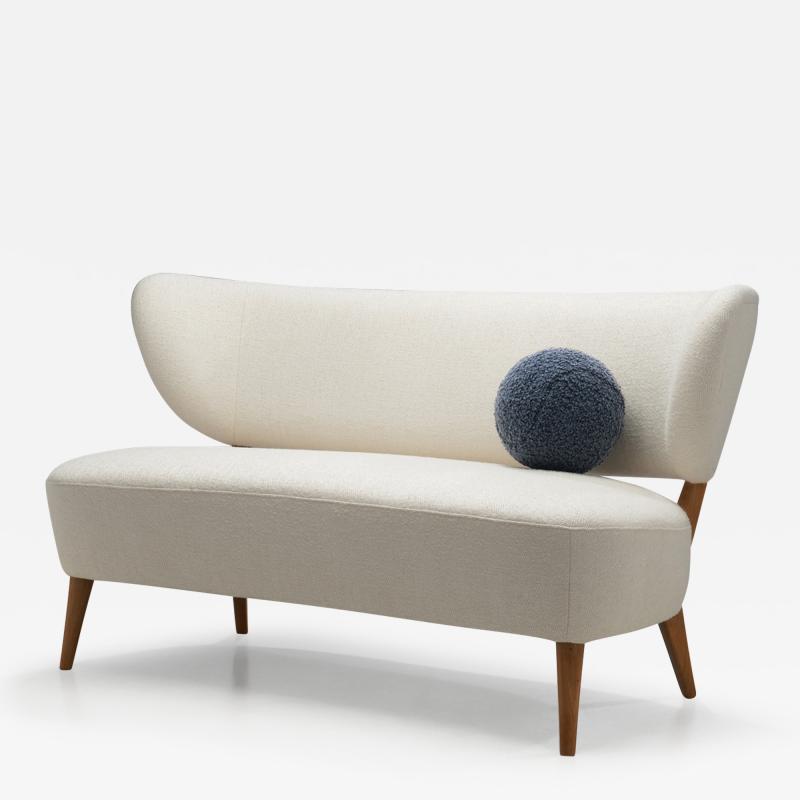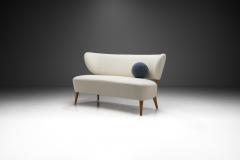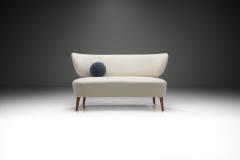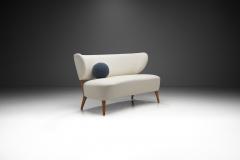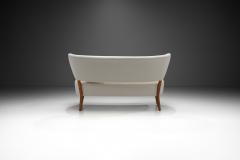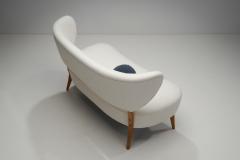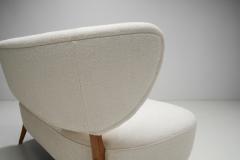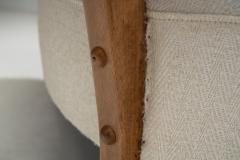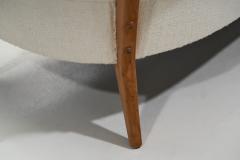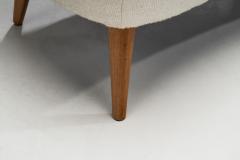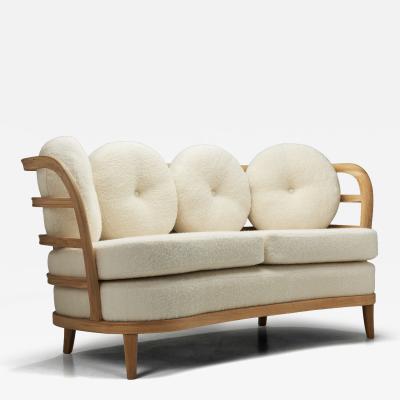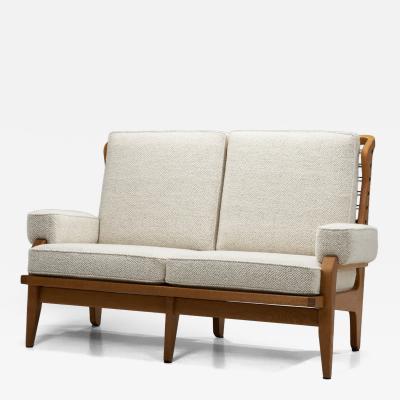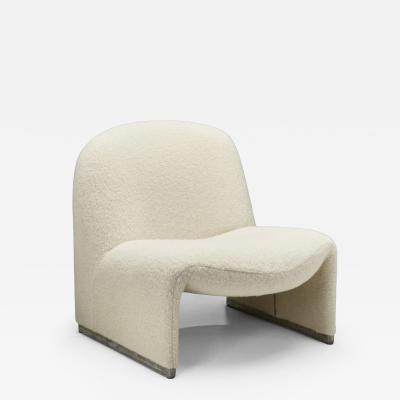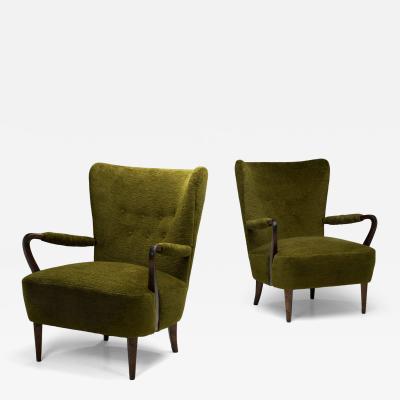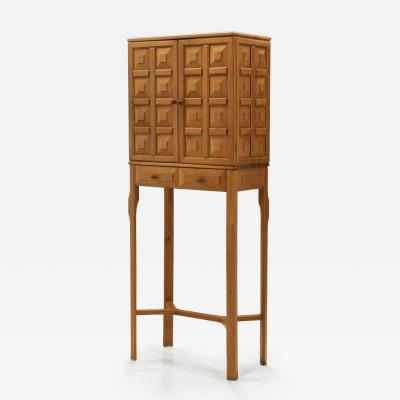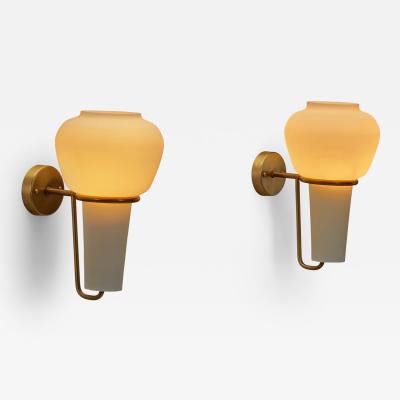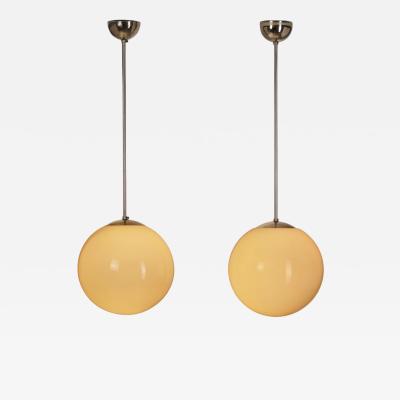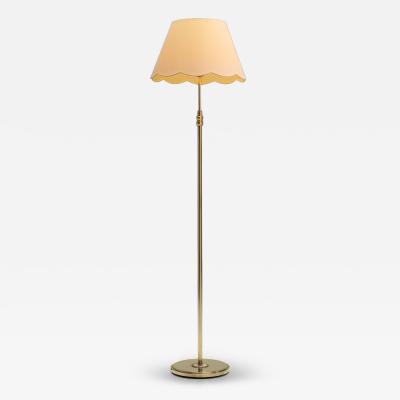- FINE ART
-
FURNITURE + LIGHTING
Shop By Category
Shop By Artist
- NEW + CUSTOM
- DECORATIVE ARTS
-
JEWELRY
Shop By Category
Shop By Artist
- INTERIORS
- MAGAZINE
Offered by:
H. Gallery
Concordiastraat 68 - 127
Utrecht 3551EM , Netherlands
Call Seller
0031302270051
Showrooms
Two-Seater Sofa by Otto Schulz (Attr.) for Boet, Sweden 1940s
Creator: Otto Schulz
(Attributed)
Offered by: H. Gallery
$ 10,925
-
Tear Sheet Print
- Save
- BoardAdd to Board
-
-
Description
This spectacular two-seater sofa by Swedish designer, Otto Schulz, is a beautiful example of the furniture designer’s repertoire of cleverly constructed pieces. With a creative and masterfully crafted wooden structure and fully upholstered body, this model truly deserves its place in Swedish design history.
The design of this 1940s sofa combines function and aesthetics, keeping the form in service of the user while keeping it elegant and modern. The curved back immediately stands out, attached to the seat solely by the elongated back legs. This is a signature technique of Schulz’s, resulting in a floating look that is especially stunning from the back and the sides. The wooden frame contrasts beautifully with the textured fabric’s light colour. The exposed wood features visible joinery with decorative wooden screw caps, which showcases the Swedish “honest design” ideal. In Sweden, “svensk design” (Swedish design) in particular operates as a set of relations linking the everyday world - composed of objects, spaces, people - to the cultural ideologies that motivate the persistence of a social democratically infused “way of life.” Thanks to this sentiment, cabinetmakers, like at Boet, put an emphasis on soft elegance and functionality, making this sofa model timeless in every sense of the word. Schulz founded the Swedish company Boet and an eponymous magazine that became an extremely influential design publication during the 1930s and 40s.
As this sofa shows, Schulz was not only a brilliant designer and architect, but also excelled in producing his designs that came to be part of Swedish design history. The artisanal production quality shows throughout this sofa and takes the Swedish idea of furniture that last for generations seriously.
Condition:
Wear consistent with age and use. The sofa has been reupholstered recently in a premium fabric. Each of our items can be re-upholstered by our in-house atelier in a fabric of choice. Please reach out for more information.
Dimensions:
57.08 in W x 26.77 in D x 31.49 in H; Seat height 16.53 in
145 cm W x 68 cm D x 80 cm H; Seat height 42 cm
About the Designer:
Otto Schulz (1882-1970) was a Swedish interior designer, furniture designer, publisher, and founder of the furniture company BOET in Gothenburg.
Schulz was born in Germany and moved to Sweden in 1907. He mainly produced opulent upholstered furniture, as well as lavishly inlaid, decorative box furniture style-wise between functionalism and traditionalism. He has some of his own invented techniques patented, including the use of decorative nails as part of the design, called Bopoint. After establishing his own furniture company, BOET, he used it as a showroom to exhibit his designs as well.
In the 1920s he started publishing the eponymous magazine BOET, which was also a platform for his own collection. The magazine was at the time the most influential, appearing in regular editions in Sweden and often included interviews with well-known designers and architects. ~H.
Shipping:
This sofa will be packaged and shipped with the greatest care and attention to make sure you will receive the item in gallery condition. Complimentary shipping within the Netherlands.
IMPORTANT!
VAT normally applies and will be added to items when purchased by a European buyer or transported to a location within the EU. -
More Information
Origin: Sweden Period: 1920-1949 Materials: Fabric, Wood Condition: Good. Wear consistent with age and use. The sofa has been reupholstered recently in a premium fabric. Each of our items can be re-upholstered by our in-house atelier in a fabric of choice. Creation Date: 1940s Styles / Movements: Modern, Mid Century, Scandinavian Modern Dealer Reference #: 88880128 Incollect Reference #: 639715 -
Dimensions
W. 57.09 in; H. 31.5 in; D. 26.77 in; W. 145 cm; H. 80 cm; D. 68 cm; Seat H. 16.54 in; Seat H. 42 cm;
Message from Seller:
Located in Utrecht, The Netherlands, H. Gallery specializes in modern and contemporary design with a strong focus on Brazil and Scandinavia. The gallery strives to preserve and promote especially Brazil's rich design heritage and curates a select group of contemporary artists. Meticulous research, ie getting in contact with the original designers, producers, their heirs, and retrieving and indexing old catalogues and magazines is at the heart of its activities. All works presented excel in great
Sign In To View Price
close
You must Sign In to your account to view the price. If you don’t have an account, please Create an Account below.
More Listings from H. Gallery View all 1231 listings
No Listings to show.
- Nordic Modern Two-Seater Sofa by Oy Boman Ab, Finland 1940s
- "Dominique" Sofa by Guillerme et Chambron, France Mid-20th Century
- Giancarlo Piretti "Alky" Lounge Chair for Anonima Castelli, Italy 1970s
- Set of Six Beech Dining Chairs by a European Cabinetmaker, Europe ca 1950s
- Five-Arm "1443/5" Glass Chandelier by Paavo Tynell for Taito, Finland 1930s
- Swedish Brass Floor Lamp by Fagerhult, Sweden second half of the 20th century
- Pair of Swedish Modern Armchairs with Green Upholstery, Sweden ca 1940s
- Modern Wooden Cabinet by Ulf Ekdahl (Attr.), Sweden Second half of 20th Century
- Pair of Hans-Agne Jakobsson Wall Lamps, Sweden Second half of the 20th century
- Nordic Modern Upholstered Armchair by Oy Boman Ab, Finland 1940s
- Pair of Paavo Tynell Model "1602" Pendant Lamps for Idman, Finland 1950s
- Brazilian Modern Armchair by Celina Decorações, Brazil Mid-20th Century
- Theo Ruth Daybed for Artifort, The Netherlands 1950s
- Mid-Century Brass Floor Lamp with Round Base, Europe Mid-20th Century



